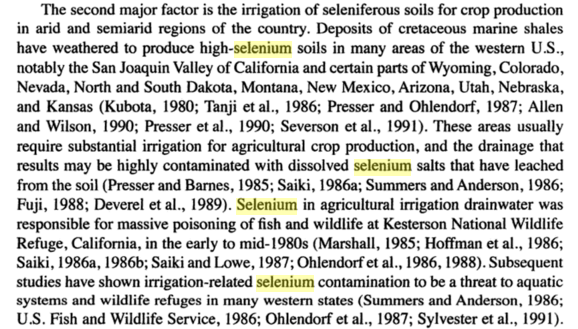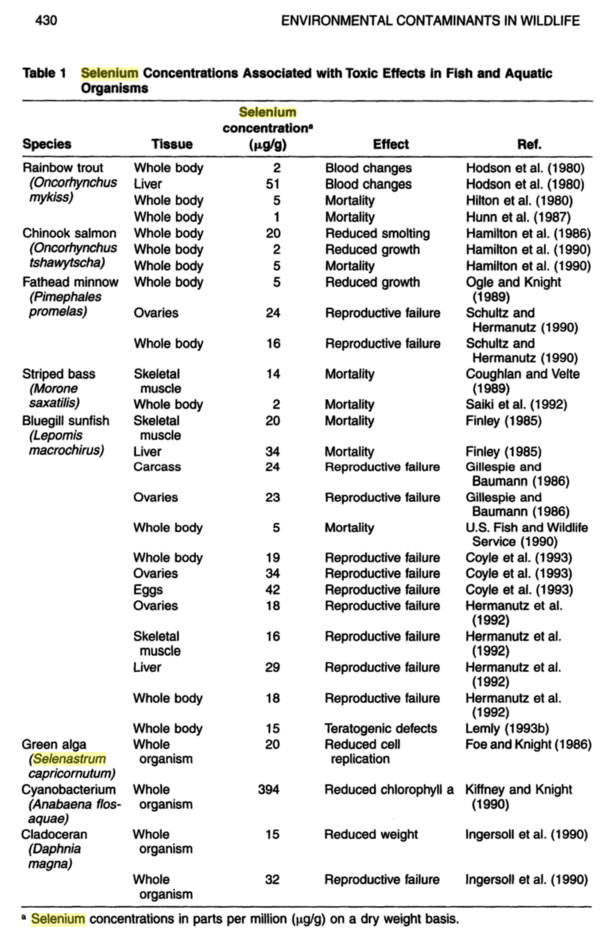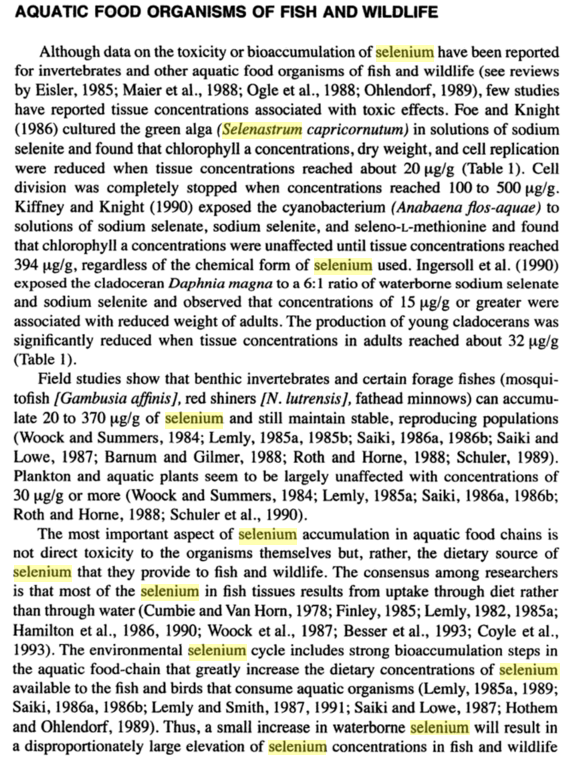|
Fresh Water Algal Succession
Transactions of the American Microscopical Society, 44(3), 138. doi:10.2307/3221462
"In sterilized tap water cultures, exposed to air and sunlight, Diatoms appeared at the end of three weeks and Euglena and Desmids at the end of the fourth. In a small puddle formed by melting snow large quantities of Diatoms appeared the fourth day. Thus, in all probability, unicellular algae, such as Diatoms and Euglena, are pioneers of the initial stage. Seeding conditions for these forms are generally much better than for the filamentous types. From the early appearance of Flagellates and Diatoms in
sterile cultures and initial stages, it is very evident that the encysted forms of these species are very widely and readily dispersed. The higher types of filamentous algae are either not so readily dispersed, or do not possess so wide a range of adaptability and require more favorable conditions than offered by the initial stages."
|
Diatom Succession and Interaction in Littoral Periphyton and Plankton
"Periphyton and plankton samples were collected at four littoral stations in a relatively shallow, eutrophic lake (Elk Lake, B.C., Canada) over a six month period from August 1967 to January 1968. The most abundant planktonic diatoms demonstrated a pattern of seasonal succession typical of temperate lakes, and all were present in the periphyton. This pattern was identical at all stations:Fragilaria crotonensis was dominant from August to October,Asterionella formosa in November and December, andMelosira italica (plusM. varians) in January.F. virescens, although never dominant, peaked in October. Periphyton communities were dominated byAchnanthes minutissima, Cocconeis placentula, F. crolonensis andF. virescens. "
|
Seasonal algal succession and cultural eutrophication in a north temperate lake
"Diatoms dominated in winter and spring, Chlorophyta in summer and fall and blue-greens in late summer, fall and winter. Spirogyra and Oscillatoria were the most ubiquitous members of the algal flora. Important perennials included Oscillatoria, Spirogyra, Closterium, Fragilaria, Meridion, Tabellaria and Cymbella. No unialgal blooms ever occurred."
|
The Role of Grazers in Phytoplankton Succession
"At times, freshwater zooplankton consume phytoplankton populations at rates similar to or faster than that at which they are growing (Hargrave and Geen, 1970; Gulati, 1975; Horn, 1981; Persson, 1985; Børsheim and Anderson, 1987). Such high losses certainly must help direct seasonal succession as they force a subset of algal species to suffer high mortality rates. Some studies have concluded that losses in general (Kalff and Knoechel, 1978; Reynolds, et al., 1982) and grazing losses in particular (Porter, 1973, 1976, 1977; Lynch and Shapiro, 1981; Crumpton and Wetzel, 1982; Kerfoot, 1987) are important in seasonal succession. In addition, the influence of zooplankton on algal succession is not limited to their selective effect on algal numbers. Zooplankton also interact indirectly with phytoplankton by making some nutrients more available to them (Gliwicz, 1975; Lehman, 1980a, b; Redfield, 1980; Lehman and Scavia, 1982; Sterner, 1986a). Zooplankton thus act not only as predators in the classic sense, but they also have an effect on the competition among algae (Elser et al., 1988)."
|
Toxicity of inorganic and organic selenium to Daphnia magna (cladocera) and Chironomus riparius (diptera)
"Daphnids were more acutely sensitive than midges to the toxic effects of inorganic Se. An organic form of Se (seleno‐[L]‐methionine) was extremely toxic to daphnids, but was relatively nontoxic to midges.
In long‐term exposure to a 6:1 mixture of selenate to selenite (a mixture representative of KNWR), the emergence time of adult midges was delayed at Se concentrations ≥ 837 μg/L. Daphnid reproduction and intrinsic rate of natural increase (r) were reduced at Se concentrations ≥ 348 μg/L and growth of adults was reduced at ≥ 156 μg/L. Whole body Mg, K and Na concentrations in daphnids were not affected by chronic Se exposure; however, whole body Ca concentration increased at intermediate Se exposure concentrations. In addition, whole body Cl concentration was reduced at 711 μg Se/L. Daphnids accumulated potentially toxic concentrations of Se from water that may adversely affect fish or waterfowl through the food chain."
|
Mechanisms of Benthic Algal Succession in Lotic Environments.
"Within a season, disturbance can initiate a species replacement process in stream algal assemblages that is similar to that observed during terrestrial plant succession (Patrick 1976, Hoagland et al. 1982, Korte and Blinn 1983), although alternative successional pathways (sensu Pickett et al. 1987) occur (e.g., Hudon and Bourget 1983, Hamilton and Duthie 1984, Steinman
and McIntire 1986, Miller et al. 1987)"
"Four mechanisms have been posed to cause changes in community composition during succession (Connell and Slatyer 1977, Pickett et al. 1987): (1) facilitation: species that dominate a site initially (early successional) produce autogenic habitat changes that enhance colonization, growth rates, and the eventual dominance of late-successional species; (2) inhibition: the initial
dominance of early-successional species at a site reduces the rate of successful colonization and/or growth by late-successional species; (3) passive tolerance: rather than being generated by interactions between earlyand late-successional species, succession occurs because invading species differ in their autecologies, i.e., certain life history traits favor initial dominance while others favor later dominance during community development; (4) active tolerance: the importance of life history traits notwithstanding, the increasing presence of late-successional species during succession reduces the growth rate of early-successional species, presumably as a result of decreasing resource availability. More than one mechanism may function within a particular sere (Quinn and Dunham 1983, Pickett et al. 1987), and their importance can vary with local environmental conditions (e.g., Palumbi 1985)."
Ecology, 72(5), 1835–1848. doi:10.2307/1940982
|
Effects of sulfate on selenate uptake and toxicity in the green alga Selenastrum capricornutum
Sulfate and selenate compete for active transport across cell membranes via a common permease, suggesting that a significant interaction may exist between uptake of the two ions. The effect of sulfate on selenate uptake and toxicity in Selenastrum capricornutum was investigated using two sulfate levels (3.3 and 33 mg/L S, as SO4) and two selenate levels (10 and 100 μg/L Se, as SeO4). This provided four treatments: one with S:Se molar ratio of 75, two with molar ratios of 750, and one with a molar ratio of 7,500. Selenium uptake and toxicity analyses demonstrated antagonism between the two anions. Increasing sulfate resulted in significantly reduced selenate uptake and increased algal growth.
|
Effect of selenium on the growth of some selected green and blue‐green algae
An algal assay procedure using microplate technique was carried out to assess the effect of selenium on the growth of some green and blue‐green algae. Sodium selenite pentahydrate (Na2SeO3.5H2O) and selendioxide (Se2O4) were tested as selenium. The test algae were Selenastrum capricornutum, Scenedesmus obliquus, Chlorella sp., Monoraphidium convolutum, Monoraphidium contortum, Monoraphidium griffithii, Anabaena flos‐aquae, Micro‐cystis aeruginosa, and Oscillatoria agardhii. The blue‐green algae are toxin‐producing strains. Cell number and in vivo chlorophyll fluorescence were the growth parameters of green and blue‐green algae respectively. Dose‐response curves quantify the selenium toxicity in terms of EC50. The lowest selenium concentrations giving no detectable growth (EC100) were visually inspected.
The test algae showed distinctly different responses to various selenium treatments.
- Selenium at concentrations < 0.1 mg L−1 stimulates, to varying degrees, the growth of all the green algae with one exception: S. capricornutum was dramatically inhibited at all treatments. O. agardhii, A. flos‐aquae and M. aeruginosa showed marginal growth stimulation up to 0.1 mg Se L−1, 1.0 mg Se L−1 and 3.2 mg Se L−1 respectively.
- In terms of EC50, the compound selendioxide was more toxic to greens than sodium selenite.
- The reverse was indicated for the blue‐greens.
- In general, the EC50 presented a wide range (0.08–7.2 mg Se L−1), with the lowest values reported for S. obliquus and the highest for M. aeruginosa. All the test algae, except S. obliquus, maintained observable growths at higher selenium levels (EC100>1.0<100mg Se L−1).
|
|
|
|
Environmental Contaminants in Wildlife: Interpreting Tissue Concentrations



|
Assessment of selenium toxicity in algae using turbidostat culture
The sublethal toxicity of selenium (sodium selenate) was assessed for Chlorella pyrenoidosa using turbidostat culture techniques. In this system the maximum specific growth rate of the population, μm, was a dependent variable monitored in real-time vs selenium concentration. There was a near linear decrease in steady-state μm in response to 4 selenium concentrations (control, 0.53, 0.90 and 1.37 μg ml−1) with a μm IC50 (toxin concentration which inhibits a growth parameter by 50%) of 0.80 μg selenium ml−1 at a sulfur concentration of 2.70 μg ml−1. Transient changes in μm between steady states were also quantified using this system. The usefulness of the systems' ability to measure adaptation and recoverability of a population to toxins is discussed.
|
Accumulation of Selenium by the Aquatic Biota of a Watershed Treated with Seleniferous Fertilizer.
Selenium (Se) is an essential trace element. Selenium deficiency and
resultant pathologies are a problem in many domestic animal
populations. It has been hypothesized that declines in wild animal
populations, specifically in several deer herds in California, are
attributable to selenium deficiency (Oliver et al. 1991).
ornia, are
attributable to selenium deficiency (Oliver et al. 1991). This study
evaluated the bioaccumulation of selenium in aquatic systems in a deer
forage range treated with a seleniferous fertilizer.
A commercial seleniferous fertilizer (SelcoteTM, Agtech Developments,
NZ-Ltd., Richmond, NZ) containing 1% selenium by weight as sodium
selenite was applied to an experimental area in the Little Antelope
Valley, CA
Pretreatment stream macrophyte samples contained selenium
concentrations of 0.62 Se/kg dry wt. Selenium concentrations increased
rapidly (11 days) after fertilizer application. Treated area stream
macrophyte selenium concentrations increased to 1.16 mg Se/kg dry wt.
Macrophyte selenium concentrations increased 87% in the treated area
stream systems compared to pretreatment selenium concentrations. Over
the next six months treated area stream macrophyte selenium
concentrations decreased to 0.43 mg Se/kg dry wt. Selenium
concentrations increased in the final macrophyte samples to 0.94 mg
Se/kg dry wt.
lnvertebrates Composite invertebrate samples (hereafter referred to as
invertebrates) collected before fertilization of the treatment area
contained 1.67 Se/kg dry wt. The treated stream invertebrate selenium
concentration increased 184% to 4.74 mg Se/kg dry wt. 11 d after the
fertilizer application. Selenium concentrations in the treated area stream
invertebrates ranged from 4.02 to 4.99 mg Se/kg dry wt. over the
duration of this study.
Typical selenium concentrations in aquatic macrophytes from natural
freshwater ecosystems are less than 0.60 mg Se/kg dry wt. Selenium
concentrations in the initial macrophyte samples collected from stream
sites were approximately 0.60 mg Se/kg dry wt. After selenium
fertilization of the treatment area macrophyte selenium concentrations
increased to 1.16 Se/kg dry wt. Macrophyte selenium concentrations in
samples collected during subsequent sampling showed a decrease with
an increase at the final sample date. Selenium was accumulated to the
highest concentrations observed in the stream system within two weeks
of seleniferous fertilizer application to the treatment area, indicating that
selenium accumulation by aquatic macrophytes is rapid.
We hypothesize that selenium is accumulated rapidly during the initial
exposure with resulting elevated tissue selenium concentrations. As
vegetative growth occurs and selenium is limited, tissue selenium
concentrations decrease due to a redistribution of selenium to the new
vegetative material. The increase in selenium concentration at the final
sample date is an interesting event. There is no simple explanation for
this increase. What may be happening is that during the fall macrophytes,
both aquatic and terrestrial, are senesing and selenium is being
released, resulting in increased bioavailability and accumulation of
selenium by the remaining plants or that... (???)
Selenium concentrations in invertebrates from uncontaminated
freshwater ecosystems typically range from 0.5 to 1.5 mg Se/kg dry wt.
(Ohlendorf 1989, Eisler 1985). Selenium concentrations in the
pretreatment stream invertebrate samples were 1.67 Se/kg dry wt.
Eleven days after seleniferous fertilizer application to the treatment area
the stream invertebrate selenium concentrations increased to 4.74 mg
Se/kg dry wt. and ranged from 4.02 to 4.99 for the duration of the study.
These data indicate that selenium accumulation by the resident
invertebrates was rapid, occurring by 11 d. Also the selenium
concentrations in the stream invertebrate populations remained elevated,
suggesting that the residence time of selenium in the stream system is a
year or longer or that there may be a continuous low concentration input
of selenium into the stream system. The addition and processing of
terrestrial organic material in stream systems is usually significant. If this
material, containing relatively low concentrations of selenium, were to
enter the treated area stream then it could result in continued elevated
invertebrate selenium concentrations.
|
Biokinetics of cadmium, selenium, and zinc in freshwater alga Scenedesmus obliquus under different phosphorus and nitrogen conditions and metal transfer to Daphnia magna
The uptake of Cd, Se(IV) and Zn by the freshwater alga Scenedesmus obliquus and the subsequent transfer and release budget in Daphnia magna were investigated under different nutrient additions and cell incubation conditions. An increase in ambient phosphate concentrations from 0.5 μmol l−1 to 50 μmol l−1 significantly increased the intracellular accumulation of Cd (by 18×) and Zn (by 5×), but decreased the accumulation of Se (by 126×) in the alga. The percentage of these metals distributing in the intracellular pool of algae also increased substantially with increasing ambient P concentrations. Nitrate addition from 5.0 to 200 μmol l−1 did not influence the uptake of any of the three metals, although a significant decrease in the intracellular Se distribution was observed. Radiolabeled algae under different nutrient manipulations (semi-continuous culture, starvation, and P-pulse treatments) were used to measure trophic transfer assimilation efficiency (AE) in Daphnia. When the algal cells were grown in a semi-continuous culture, starved for N and P, or were treated with P-pulse, the AEs of Cd and Zn were generally independent of the nutritional conditions, but the Se AE was significantly affected by different P levels. The efflux rate constants, determined during 10 d depuration following 7 days of dietary uptake, decreased significantly for Cd and Zn, but were relatively constant for Se with increasing P concentration. N-addition caused no effect on the metal efflux rate constants. P- or N-additions did not influence the release budget (including molting, neonates, excretion and feces) for all three elements in Daphnia. Our study indicated that phosphate enrichment may substantially increase metal uptake in green alga Scenedesmus obliquus. Responses of trophic transfer in Daphnia to nutrient enrichment were metal specific. P-enrichment can possibly lead to considerable decrease on Se transfer from algae to zooplankton.
|
Effects of selenium diets on growth, accumulation and antioxidant response in juvenile carp. Ecotoxicology and Environmental Safety
"to the LSe diet group, but a difference occurred after
60 days as HSe diet carp had higher mean weight (40%) and length
(12%) values (q¼8.58, po0.001) than LSe fed carp"
|
Effects of CO2 on competition between a cyanobacterium and eukaryotic phytoplankton
To distinguish whether there is a causal link between cyanobacterial dominance and low CO2 and (or) the
associated high pH, we ran duplicate competition experiments using a factorial design of CO2 by alkalinity. In various
treatments, three concentrations of alkalinity (ca. 50, 500, and 5000 µequiv.⋅L–1) and CO2 (ca. 1.3, 13, and 130 µM) generated
three pH values (ca. 7, 8, and 9). At the end of about a 1-week incubation, Aphanizomenon flos aquae was the only
cyanobacterium present, while the chlorophytes Scenedesmus and Selenastrum along with unidentified flagellates comprised
the eukaryotic phytoplankton. The treatments had a dramatic effect on cyanobacterial biomass, which varied from >90% to
0% of the total phytoplankton biomass across treatments. Variation in percent cyanobacteria was better related to pH than to
CO2. At pH 8 and 9, percent cyanobacteria was relatively high at all CO2 concentrations. Only at pH 7 was percent
cyanobacteria negatively related to CO2 concentration. These results demonstrate both direct and indirect effects of CO2 on
cyanobacterial dominance but suggest that, for A. flos aquae, the indirect impact of CO2 (pH alteration) is most important. The
impact of CO2 on this cyanobacterium, therefore, depends on the alkalinity of the system
|
Seasonal Succession of Algae
"Phytoplankton populations undergo a natural succession during the growing season (Figure 1). Many factors influence algal succession: amount of sunlight, availability of nutrients, temperature of the water, and zooplankton grazing. It is natural for diatoms to be the dominant phytoplankton in the spring and then green algae in the early summer, while cyanobacteria may dominate in mid to late summer. The phytoplankton samples collected often show different dominant species, depending on when the samples were collected."
|
Evolution And Paleontology Of Algae
"Modern ultrastructural and molecular studies have provided important information that has led to a reassessment of the evolution of algae. In addition, the fossil record for some groups of algae has hindered evolutionary studies, and the realization that some algae are more closely related to protozoa or fungi than they are to other algae came late, producing confusion in evolutionary thought and delays in understanding the evolution of the algae."
|
|
|